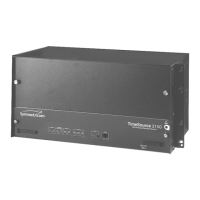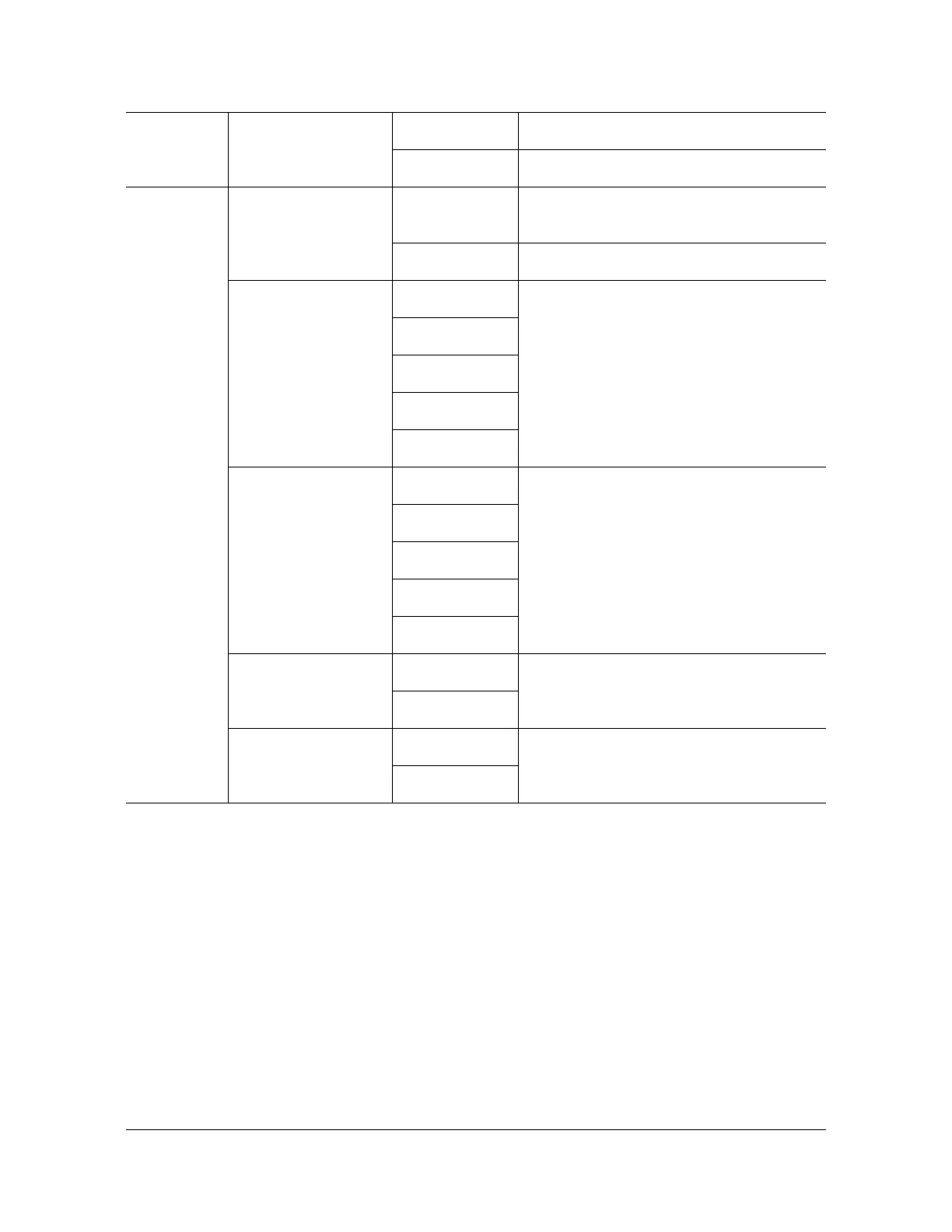Chapter 4 TL1 Reference
Commands
142 TimeSource User’s Guide 097-72020-01 Revision K – December 2005
Notes:
1. All commands on DCDUSERPORT TID which equal SID of the DCD are
forwarded to the DCD. Similarly, the responses from the DCD are sent to the
provisioned DCDUSERPORT.
2. When setting alarm integration time (SEVERITY or SERAFF), the type of alarm
(HOLDOVER, GPS, LOS, AIS, or ERROR) has to be specified. For example,
ED-EQPT::TS3100:CTAG::: ALARM=HOLDOVER, TIME=72-00,
SEVERITY1=EV, SERAFF1=NSA, SEVERITY2=MJ, SERAFF2=SA; will
generate a holdover event as soon as the condition is detected with an NSA flag.
Once this condition has existed for 72 hours, TS3100 will generate a major alarm
with an SA flag. These parameters can then be verified using the RTRV-EQPT
command.
RO A & B ALARM=x x = LOS LOS alarm
x = ERROR ERROR alarm
TS3100,
SPAN
A & B,
RO A & B
TIME=x x = HH-MM Hour (00-000) and minute (00-59) time to
escalate alarm
x = 0 No alarm escalation
SEV1=x
(see Note 2)
x = CR Severity of initial alarm prior to escalation
x = MJ
x = MN
x = EV
x = NA
SEV2=x
(see Note 2)
x = CR Severity of escalated alarm
x = MJ
x = MN
x = EV
x = NA
SAFF1=x
(see Note 2)
x = SA Service affecting state of initial alarm prior
to escalation
x = NSA
SAFF2=x
(see Note 2)
x = SA Service affecting state of escalated alarm
x = NSA

